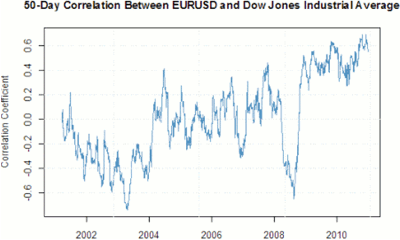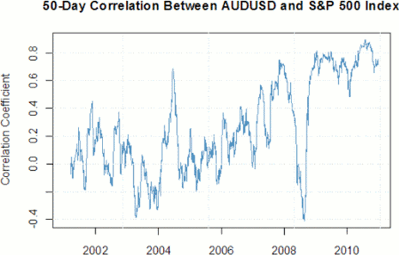Fresh multi-year highs in the US Dow Jones Industrial Average have coincided with similarly impressive euro and Australian dollar gains, and said currencies represent good proxies for trading stocks via a currency trade.
Such strong links between the euro/US dollar, Australian dollar, Dow Jones, and S&P 500 index emphasize that financial market risk sentiment remains a primary driver of cross-market moves. The safe-haven US dollar has fallen as equities hit fresh multi-year peaks, and we would expect further S&P 500 rallies to prompt similar greenback losses.
This dynamic may be particularly strong for the Australian dollar/US dollar pair, which is a major component of the G10 forex carry trade, meaning that speculators have bought the high-yielding Australian dollar against its lower-yielding US counterpart in order to collect the interest rate differential. Given that this is most often a highly leveraged bet, it is likewise a risky one that tends to do very poorly during flare-ups in financial market tensions and news-driven events.
The Strongest Forex Correlations
The safe-haven US dollar remains highly correlated to the Dow Jones Industrial Average, and this is particularly true in the euro/US dollar pair. The 50-day correlation between the EUR/USD and Dow trades near record highs, and we would expect any further highs in stock markets to coincide with US dollar weakness. Thus, it seems that the EUR/USD pair remains a solid proxy for trading the Dow and broader financial market risk sentiment.
The high-yielding Australian dollar is very highly correlated to the US S&P 500 and remains a good proxy for speculating on the direction in equity markets. The 50-day correlation between both instruments trades near record highs, and we expect this to remain the case amidst generally buoyant financial market risk sentiment. As one of the primary recipients of speculative yield-seeking capital, the Australian dollar is at high risk of corrections on a flight to safety across financial markets.
By David Rodriguez, quantitative strategist, DailyFX.com












